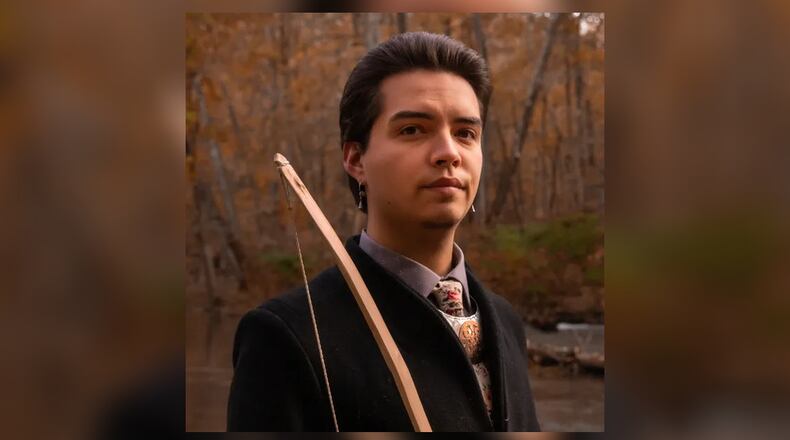Silverhorn, 24, is a citizen of the Eastern Shawnee tribe, and has been a cultural ambassador and interpreter for museums and programs since he was a teenager. He works as a cultural programs manager with the Ohio Department of Natural Resources, and a leading researcher on the development of Great Council State Park in Xenia.
The museum at the state park will be an opportunity for, among other things, Shawnee people to tell their own stories, as the museum content, design, and exhibits are created by and with members of the Shawnee nation.
“We’re thinking about the Great Council site as a place that exclusively deals with tribal history — and specifically Shawnee — that it will be attractive to Shawnee people who want to get into the museum field, who want to interpret their history and culture in a place that’s relevant to them,” Silverhorn said.
Shawnee interpreters will be sharing history from the first human events in Ohio all the way through the tribes’ experience in Oklahoma today, he added.
The Great Council State Park area off U.S. 68 in Xenia Twp. was once home to Oldtown, one of the largest-known Shawnee settlements in Ohio. It had a population of around 1,000 people between 1777 and 1780. The site also is near the birthplace of Tecumseh, the 18th century Shawnee chief, warrior and orator.
Most Native Americans, including the Shawnee Tribe that lived throughout much of southern Ohio, were forced to leave Ohio during the Indian removals of the 1800s. Many landed in Oklahoma, where the Eastern Shawnee are now headquartered.
Today there are no federally recognized Native American tribes in Ohio, which Silverhorn said has led to a huge disconnect between the public perception of Native peoples and their lived experience.
“Every little bit of Ohio has its own sort of local history that it defends very strongly. It’s very compartmentalized, very localized. But that’s not true,” Silverhorn said. “There’s just a huge misunderstanding of how we as tribal people came to be, and there’s also a huge lack of knowledge around what we do today.”
That disconnect has led some Ohioans to be resistant to change, particularly in the use of native peoples and symbols as sports mascots, or stage productions where non-Indigenous actors dress up as Indigenous people and historical figures. Both of these come with real-world consequences for Indigenous people.
“If the only things that people know about us are what they see on TV or on stage, that adds to this idea that we’re not real, and therefore our problems are not real,” Silverhorn said. “People who are living here in Ohio, in these historic places, value history as something that happened, and now it’s done. It’s concluded. But we as tribal people value history because it sets up how we live today. We actively feel it all the time.”
Local and community organizations, as well as governments and public policy, can look for opportunities to involve tribal voices, Silverhorn said, and the general public can help by learning about Indigenous cultures and the issues they face. Among these is the practice of “playing Indian,” or non-Indigenous people making public claims of Indigenous identity for financial gain.
Silverhorn said he hopes that Great Council State Park will not only serve as a gold standard for Native interpretation of history, but also as a place for tribal citizens to have a platform, and train the next generation of interpreters.
“I want to speak for myself, and I think that other tribal citizens want to speak for themselves. That’s mainly what we’re asking for in a lot of cases,” Silverhorn said. “So for me having the immense privilege to have resources and to live a life that is separate from my community, but speaking positively about my community, I hope that I can help to inspire other tribal citizens to do the same thing. Because we desperately need more voices.”
Great Council State Park is under construction and estimated to open in 2023, featuring a 12,000-square-foot interpretive center architecturally based on a council house historically used by the Shawnee tribes.
About the Author


